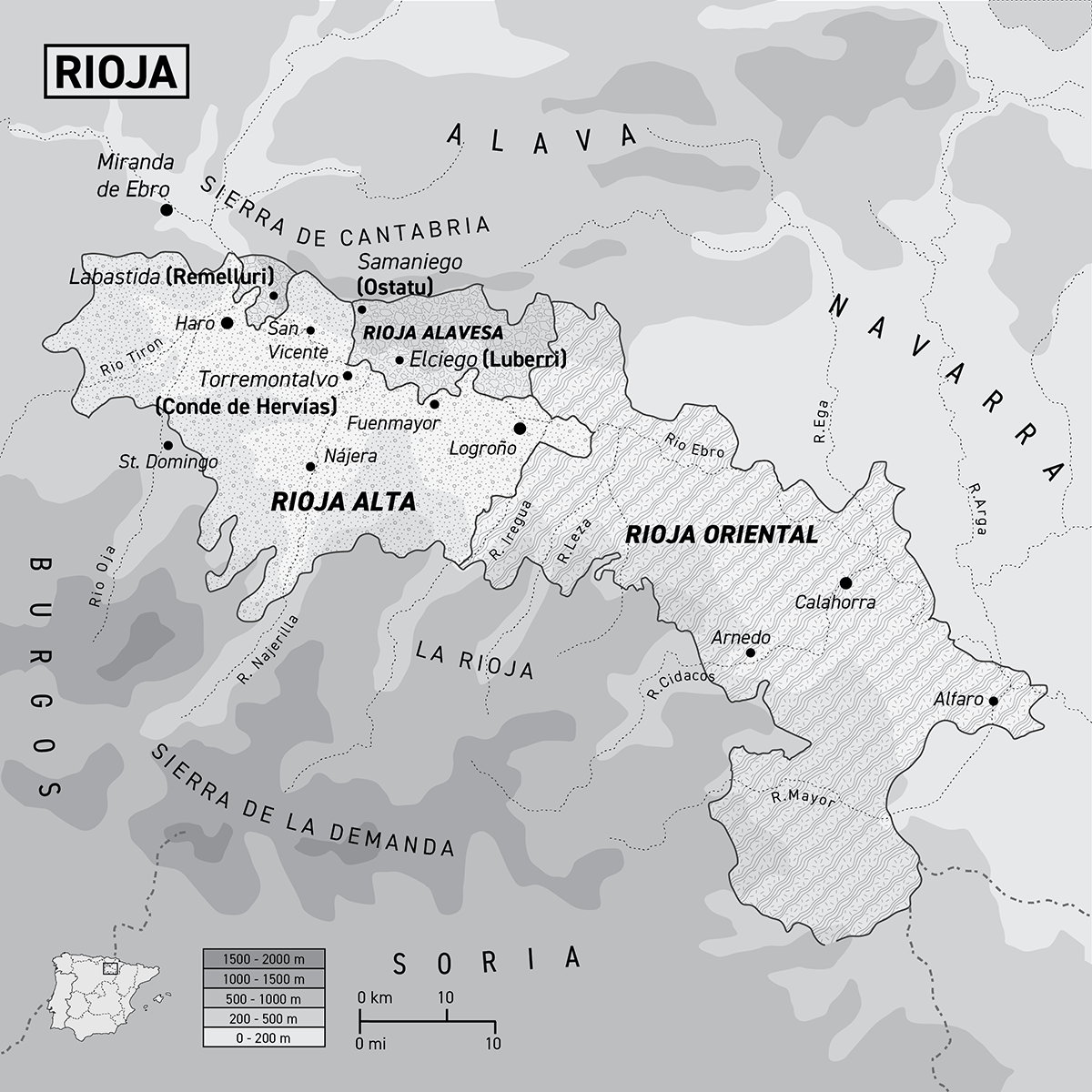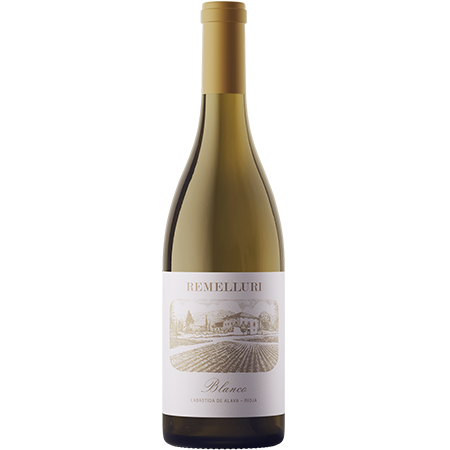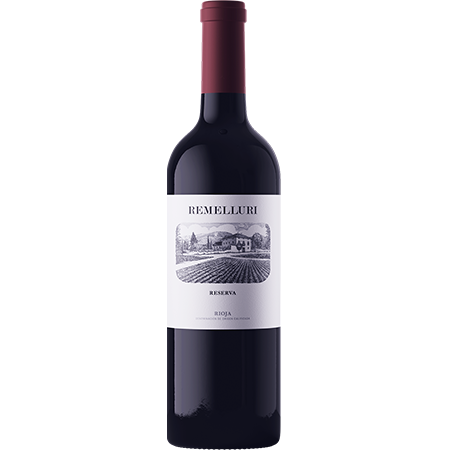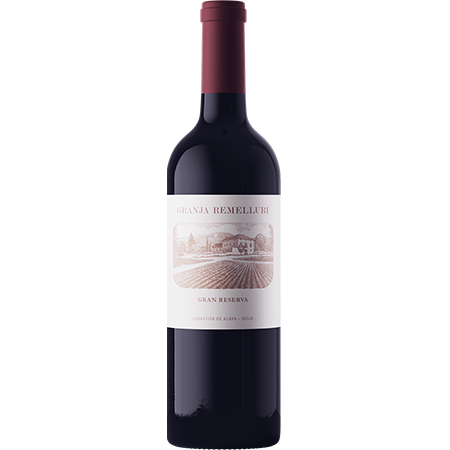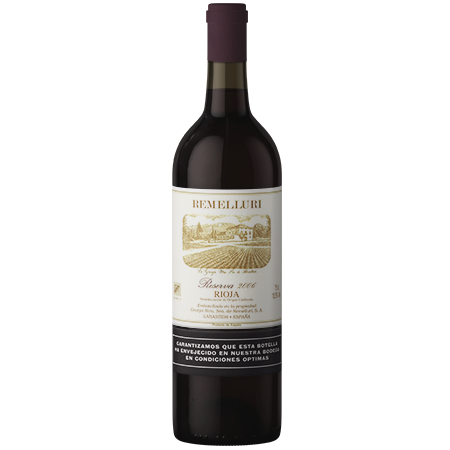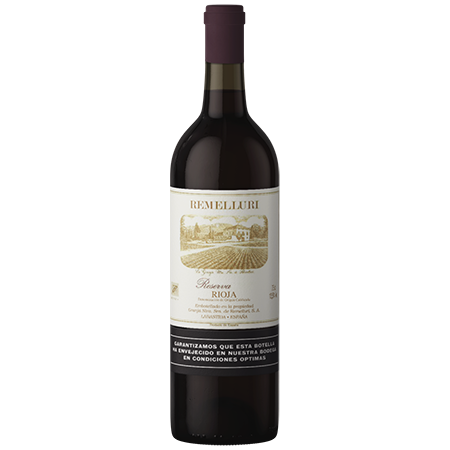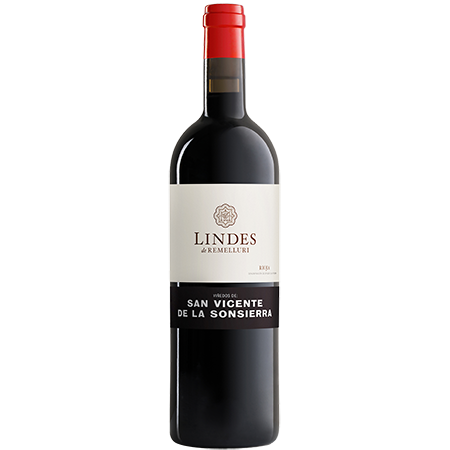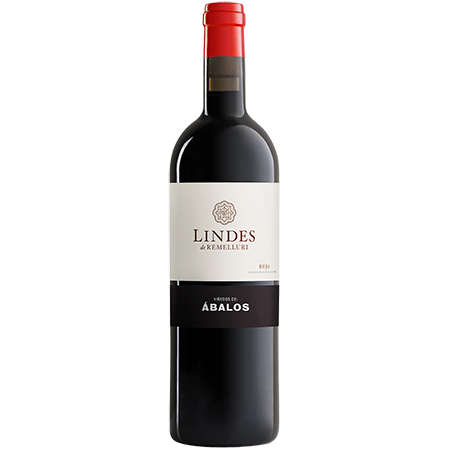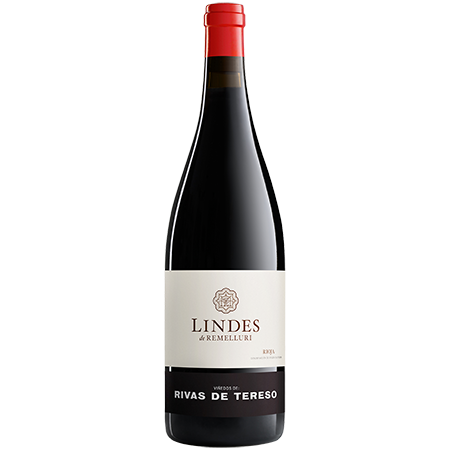Remelluri
Remelluri is one of the most timeless and iconic landscapes of the wine world,
as well as one of the most enchanting vineyards in Spain. While firmly anchored in its historical past, Remelluri illuminates the path forward for not only the future of Rioja but also world-class, terroir-based fine wines produced across Spain. It is about rediscovering the essence of Rioja, and the story’s evolution is genuinely cinematic in scope. At Remelluri, the future lies in the past.
“Recovering regions, protecting traditions, head-pruning vines, helping those who are starting out. That’s what I’m talking about. Everything we’re doing is restoring; we’re not trying to invent anything new. In fact, our motto is: The Future Lies in the Past.”
– Telmo Rodríguez
Incredible Origins
The estate’s origins date back to the tenth century when Count Erramel, a Basque warrior and aristocrat from Álava, founded a small village on the site (uri in Basque); hence the name Erramel Uri evolved to Remelluri. The first wines were made here in the fourteenth century, when Hieronymite monks tended the monastery atop the nearby Sierra de Toloño mountains and founded a sanctuary and farm on the site. The earliest written evidence of wine production dates from the Laguardia village tax records of 1596, noting Remelluri’s contribution. The monks later abandoned the area, but local hermits continued to maintain the shrine while the Real Divisa, a local community organization, maintained the farms to accommodate the needs of pilgrims who came to pray at the sanctuary. The estate was eventually split up and sold in the nineteenth century, as were many properties belonging to religious orders throughout Spain.
The modern winery was established in 1967 when Jaime Rodríguez Salís, father of siblings Telmo and Amaia Rodríguez, purchased the vineyards at the heart of the former estate and began to make wine from the ancient, abandoned site. Jaime and his wife Amaia were entrepreneurial, non-conformist intellectuals from Irún, where Jaime was a writer and archeologist and Amaia, a writer and artist. The family was always forward-thinking, with incredible respect for culture, creativity, and craftsmanship. Since then, Remelluri has been devoted to restoring the original, historic vineyards to their fullest potential. Remelluri became the first single-vineyard Rioja of the modern era with its release of the 1971 vintage, standing out from a conservative wine culture based on house style and blends of purchased wines from throughout Rioja. Remelluri was founded on individuality and the concepts of terroir and specificity, always distinct from the industrial machine of greater Rioja.
Telmo Rodríguez (winemaker) and Amaia Rodríguez Hernandorena (viticulturist), returned to the property and took over the project from their father in 2009. Their return to their family winery marked the beginning of a new era at Remelluri—both a renewal of purpose and a commitment to the process of uncovering and revealing the truth of Remelluri. Telmo’s winemaking partner in all of his projects, the prolific Pablo Eguzkiza (trained at Château Petrus), has helped implement numerous changes in the vineyards and winery that can now be seen in recent vintages of Remelluri.
Pure Mountain Rioja
Remelluri’s vineyards are located along the slopes of the Sierra de Toloño mountains in the valleys of Valderemelluri, La Granja, and Villaescusa, just above the village of Labastida in Rioja Alavesa. The vineyards here are at the highest elevation in the Rioja region with vines planted between 500 and 950 meters, south-facing, and protected from the prevailing northern winds and frost. The estate consists of more than 80 individual plots, all of which are vinified separately. One of the keys to the location’s significance is that the vines are planted in terraced amphitheaters following the contours of the mountainside, which shelters them from the harsh weather on the leeward side. It is worth noting that the Atlantic influence of the Bay of Biscay lies only an hour and a half by car from Remelluri, as evidenced by Telmo’s frequent surfing trips with his filmmaker brother Sanxo to Spain’s top destination for big waves. This ideal location is why generations of inhabitants have sought shelter and farmed the site for centuries.
It is this unique microclimate that gives the wines of Remelluri their distinct personality and character. These are mountain wines that express themselves very differently from the typical Rioja wines of the plains below. The grapes at Remelluri, grown in the foothills of the Toloño mountains, are almost always the last to be harvested in Rioja; it is common for the vintage to last well into October or November. Poor, stony soils, with layers of calcareous clay, give considerable structure for aging. At the same time, the Atlantic influence provides abundant rainfall and much lower temperatures than in the rest of the region, lending incredible acidity and freshness. The fluctuation of cool nights and warm days offers the ideal conditions for proper, long phenolic ripening of the grapes, resulting in Remelluri’s hallmark complex and nuanced aromatics.
The high-altitude wines from these vineyards have more in common with the great nebbiolo-based mountain wines of Italy than the fruity garnachas of southeastern, Mediterranean-influenced Rioja. They are also naturally built to age gracefully for decades, similarly to their Italian counterparts.
Remelluri is pure mountain Rioja.
Remelluri’s Cultural and Environmental Plan
The Remelluri farm contains a rich trove of archaeological artifacts, including the remains of a necropolis dating from the 10th century and an ancient stone wine press lagar, carved from a granitic boulder in the middle of the vineyard. The property also contains a chapel dating from the 11th century featuring the last works of Basque surrealist painter Vicente Ameztoy. Dating back even further is Iron Age art found buried on the south end of the farm, discovered while planting the original vineyards in the 1960s. Remelluri has been an original idea of historic rebirth and refinement since its inception.
“One cannot really own Remelluri; the project is always alive and bigger than any one of us. We are only the current stewards of the land, guiding the project until the next generation takes it over. We do our best to uncover the truth of what the land gives us.”
– Amaia Rodríguez Hernandorena
Organic farming principles have always been utilized here to ensure that the wine remains true to its unique terruño. As such, chemicals have never been used at the property, and the entire production has been certified organic since the 2014 vintage. Remelluri also uses an integrated system of agriculture with great respect for the environment. Hedges and plantations are maintained and nurtured, and trees are planted to complement the vineyards, such as almond, peach, fig, and olive trees, as well as a rich and productive native bee colony (the wax from which is used to seal the coveted Remelluri Blanco). The Remelluri property contains many old head-pruned vines, which provide inspiration for all of their vineyards. Vine training has been restored to these head-pruning techniques, and vine row spacing is suited to hand-harvesting. The history of vines in this region of Alavesa is written in these traditional methods.
Execution of Remelluri’s cultural and environmental plan is the domain of Amaia Rodríguez Hernandorena, who holds a Cultural Anthropology PhD from the University of Oxford. Prior to her return to Remelluri in 2009, Amaia worked closely with their good friends in Burgundy, Domaine Leflaive, to further understand their approach to viticulture and how it could apply to the Remelluri project. She also previously worked for the Basque government in their Department of Culture, developing projects to support Basque artists.
Amaia is dedicated to the study and design of the continuous improvements to the property, which includes integrated polyculture and symbiosis with the natural environment. Some of her tools include the practice of organic and biodynamic viticultural elements. Her stewardship includes the nearby mountains, the fauna of the area, a botanical, fruit, and vegetable garden, as well as the ancient buildings, springs, roads, and the historic built environment. Amaia utilizes a whole-system approach in which there is no division between the individual elements of the vineyards and the surrounding ecosystem—they are one and the same.
As for her prolific winemaking brother, Telmo Rodríguez: after years of perfecting his craft and gaining international recognition for his advocacy of forgotten regions and native varieties throughout Spain (with his partner in Compañia de Vinos, Pablo Eguzkiza), the duo returned to their family winery with a vision for the future of the estate, laser-focused on place and reverence for the region. As the estate reclaims vineyard sites, the team selects varieties best suited to the specific microclimate of each plot utilizing traditional bush vine training. All parcels are hand-harvested and vinified separately with the least intervention possible and the utmost respect for each site. This is the process of uncovering and revealing the essence of Granja Remelluri as a place and wine.
Matador Manifesto and The Futuro Viñador Collective
Through an initiative started in 2016 called the Matador Manifesto, Telmo and Amaia welcomed other quality-minded wine producers to Remelluri to meet and discuss the future of Spanish vineyards and the path forward in promoting quality over quantity.
“I’d like Remelluri to be a meeting place, somewhere that is open to everyone, where people can come to meet, discuss and drink wine. It’s time to be generous with others. We have to help those that are starting out; that way, we can give back to wine what wine has given to us.”
– Telmo Rodríguez
The resulting document of intent was signed by over two hundred of Spain’s most relevant viticultores. The ensuing movement has been a catalyst, both for conversations between producers, and change initiatives throughout the Spanish wine industry. Three years of meetings and discussions resulted in Futuro Viñador, a new non-profit, terroir-driven association on the rise in Spain. They pursue a dynamic, open approach where sustainability, viticulture, and winemaking aspects are all taken into account.
“The members will carry the Futuro Viñador logo on their bottles and want consumers to know that they are purchasing a wine made by artisans, people who care for the soil and the landscape, who respect the countryside and who have nothing to do with industrial, marketing-driven wines. It’s not a matter of drinking one type of wine in favor of another; we just want to make it clear that they are different.
Alongside many other vine-growers from all over Spain, we take our place in a silent revolution that is helping to transform not only our wine culture but also the cultural practices and image of our country.
The foundations of this great change are the recovery of ancestral cultural practices, the vindication of our great historical vineyard, the wealth of our own ancient varieties, and both the biodiversity and the diversity of the climates, landscapes, and people of our country.”
– Futuro Viñador Collective
Expressions of Remelluri
Remelluri Reserva is the flagship red wine of the property, exclusively focused on conveying the essence of Remelluri the place. Made from organically-farmed grapes grown exclusively within the property, Remelluri is always a blend of traditional Rioja varieties, produced with minimal impact and low intervention. True to its origins, Remelluri Reserva is a wine of place and vintage, offering a snapshot of the conditions each year brings for high-altitude, mountain viticulture in Rioja. As such, vintages of Remelluri will age gracefully and improve for decades to come, repaying those with patience many times over.
If Remelluri Reserva is the flagship of the estate, expressing the terruño and weather conditions of each vintage, then Granja Remelluri Gran Reserva represents the ideal prism of the mountain vineyards—a classical expression of the place, the quintessence of the vineyards.
Telmo selects specific parcels of the oldest vines at some of the highest altitudes on the property for Granja Remelluri Gran Reserva. The blend includes a larger proportion of centennial garnacha from a vineyard planted more than a hundred years ago at 750 meters in the foothills of the mountain. Granja Remelluri has a marked Atlantic character and goes through extended aging in large format foudre barrels, with further time in bottle until they feel the Granja is ready to be released.
Everything here is done by sensory tasting and the experience of the team, not by formula. Recently, they have completed renovations on a former stable that now houses a neat cellar containing a battery of large foudres that are reserved solely for the production of Granja Remelluri. Telmo wanted to completely separate Granja Remelluri, both physically and spiritually, from the production of the Reserva, to give the project its own separate, clear identity, which is evolving. Future exploration of the Granja Remelluri project may include the definition of specific vineyards. For now, Telmo and Pablo want a quiet place where they can taste and really listen to what the character of the wines has to say. Produced in only the best vintages, Granja Remelluri Gran Reserva is offered in small quantities to the most discerning cellars. The aging potential of Granja is matched only by a precious few of the greatest red wines in the world, as a well-cellared case will continue to enchant the owner over a lifetime.
The wine at the estate that has been the passion project of Telmo Rodríguez since his early days as a winemaker, and has become one of the most coveted and sought after cult wines in all of Spain, is the Remelluri Blanco. The story goes that Telmo’s father Jaime would never let him experiment with the red wines of Remelluri because the risk of failure was too great to make substantial changes. Instead, Telmo was given free rein to create a white expression of the Remelluri farm. For this project, he was inspired by his time spent learning winemaking in France with Gérard Chave in Hermitage, Clape in Cornas, Château de Beaucastel in the southern Rhône, and Domaine de Trévallon in Provence. At these esteemed estates, Telmo learned to make wines that he refers to as “human-scale”—wines that spoke of people and place. Wines with a soul. This was exactly the type of white wine he set out to make in the high-altitude vineyards (700m+) on the mountainside, overlooking the Ebro river valley with Rioja sprawling out below in every direction.
The concept of Remelluri Blanco remains the obliteration of grape variety by using a number of co-planted vines and utilizing a gentle, low-impact élevage. Thus, Telmo ensures that Remelluri Blanco speaks only of the terruño of the place, rather than of any particular grape or process. With Remelluri Blanco, he has achieved something truly unique and singular, with each vintage coveted by the same collectors who search out Chave’s Hermitage Blanc and Montrachet by Domaine Leflaive. Telmo’s Remelluri Blanco illuminated a path forward for world-class, place-based white wines in Rioja during an era when only the red wines garnered any attention or respect. As with all of the wines of Remelluri, the blanco handsomely repays extended cellar aging and patience. Remelluri Blanco is produced in very small quantities and offered to the best clients of Remelluri.
The Future Lies in the Past
The evolution of Remelluri is the exploration of two rivaling concepts to the origins of Spanish wine, and more specifically, to the Rioja discipline: one of place and one of time. The concept of place is one that, until quite recently, has been relegated to the outer limits of the Rioja discussion, in favor of the dominance of brand and appellation identity. As wine drinkers, we are told not to worry about the villages where the grapes come from; rather, focus on the wine being a “Rioja,” whether Crianza, Reserva, or Gran Reserva. How long was the wine in the barrel, and what kind of barrels were they? What percentage of American oak does the wine contain? How much tempranillo? These questions lead the drinker directly away from the vineyard to a path which specifically concerns the concepts of aging and élevage, and their effects on the wine. They are the results of a process, and that process is time. This is the concept from which Remelluri Blanco stood in stark contrast, carrying the flag for specific places, made with as little process as possible. If Remelluri blanco was the beginning of this journey as a young winemaker, then Lindes Remelluri is the brilliant legacy of his vision of place-based wines in Rioja.
Lindes de Remelluri
Lindes de Remelluri (Borders of Remelluri) is the result of a visionary and broadly representative social initiative at Remelluri to emphasize the identity and prestige of the village-specific wines of Rioja. The Lindes project began in 2009 with the return of Telmo and Amaia Rodríguez Hernandorena to their iconic family winery upon their father’s retirement. Lindes de Remelluri is a social and economic project rooted in collaboration with trusted grower-partners from villages near the Granja Remelluri property with the goal of improving their surroundings and communities by encouraging consumers to ask one question: Where does your Rioja wine come from?
The siblings’ return to the estate marked the beginning of a new era at Remelluri, which served two purposes simultaneously. First was their commitment to the process of uncovering and revealing the true status of Granja Remelluri as a singular, historic place and wine, and secondly, developing the identity and potential of Rioja’s most prominent villages, which became the Lindes de Remelluri project.
With Lindes de Remelluri, Telmo Rodríguez seeks to evolve the dialogue regarding the future of the Rioja region from one of aging methods, grape varieties, and blends (wines made in the cellar) to a conversation focused on villages, sites, terroir, and responsible economic and ecological vineyard stewardship (wines made in the vineyard).
At the macro level, Rioja comprises three sub-regions: Rioja Alta, Rioja Alavesa, and Rioja Oriental (formerly Baja). This division, based on political and physical boundaries rather than soils and geology, is fundamentally inadequate when understanding the Rioja DOCa’s range of terroirs.
Lindes de Remelluri were the first wines of Rioja to carry the names of the villages in which they were produced directly on the label since the 2010 vintage when Labastida and San Vicente de la Sonsierra were first produced as distinct village wines. Village-specific labeling is standard practice for other top wines from around the world, yet it has remained a radically progressive idea in Rioja. Here, the dogma of house style has been protected at the expense of village identity, and the practice of village labeling has been historically outlawed.
Lindes de Remelluri explores the unique characteristics of each village, emphasizing the identity and character of village-specific wines and their grape growers by demonstrating their unique potential through the lens of excellent viticulture, gentle vinification, and élevage. The growers for Lindes de Remelluri utilize ancestral farming techniques, which include organic, biodynamic, and regenerative vineyard practices. In the cellar, rather than using winemaking and technique to transform the wines, they aim for consistency across the range to guide each expression to reach the full potential of the place. Telmo describes this winemaking as a “winery in the back, village in the front.”
Lindes continues to honor the deep relationships the Rodríguez family has maintained with each family of grape growers over the decades by encouraging excellent farming through continued responsible economic stewardship and financial incentives to produce the healthiest, best fruit possible. They achieve this by paying their growers some of the highest prices in the region for their contributions to Lindes de Remelluri, an inherently revolutionary practice. This philosophy proposes that the future of sustainable viticulture and wine culture must take into consideration the economic incentives for those who contribute to the success of a project. Lindes de Remelluri is a leader in the region for their advocacy of raising the prices paid for quality grapes across the Rioja region.
With the goal of being a broadly representative social project, inclusive of some of the most important Rioja villages, Lindes de Remelluri widened its scope in 2020, expanding to explore the unique characteristics of six of the most important Rioja villages: Salinillas de Buradón, Labastida, Rivas de Tereso, San Vicente de la Sonsierra, Peciña, and Ábalos (in a special partnership with the Marqués de Legarda). In addition to widening the scope of Lindes de Remelluri to include more villages, the future vision also includes verticality with the production of wines from single growers and vineyards from each village, as Telmo Rodríguez has invited smaller growers to participate in the Lindes program by vinifying their wines at Remelluri. Lindes de Remelluri represents the contribution and legacy of the Rodríguez family for the future success and prosperity of the Rioja region.
The relentless scholarly exploration of wine and culture is the spirit of Remelluri. The landscape presents a timeless environment where one can simultaneously discover both the history of the northern Iberian peninsula, and the future of Spanish viticulture. In this regard, Remelluri as a place of great energy continues to magnetically attract creative, motivated individuals like the Rodríguez family to write their stories in the foothills of the Cantabrian mountains.
Products
Cellar Releases
Remelluri Cellar Releases are direct, authentic cellar releases of guaranteed provenance, stored under optimal conditions at Remelluri in Labastida, Rioja, until we ship them with verified refrigerated technology to the US. Furthermore, we sell exclusively to distributor partners who will deliver them refrigerated to their final destination. These releases are selected by Remelluri owner and winemaker Telmo Rodríguez for their exceptional nature and beautiful evolution – at just the right moment, offering fully-cellared expressions directly from Remelluri to the market in extremely limited quantities.
While many of these vintage releases have recently entered their ideal drinking windows, they will undoubtedly repay additional cellar time, offering enjoyment for a decade or more. De Maison Selections verifies refrigerated shipping and storage conditions throughout the wine’s journey to local merchants. Proper temperature and shipping conditions are essential factors in the enjoyment of well-cellared wines. We offer verified provenance beverages to our customers, paying special attention to the correct transportation and storage of our portfolio. You can read more about our innovative partnership with VinAssure here. We are proud to be one of the few US importers that require and authenticate their products’ refrigerated shipping and storage..
Lindes de Remelluri – Rioja Villages
Lindes de Remelluri (Borders of Remelluri) is the result of a visionary and broadly representative social initiative at Remelluri in collaboration with trusted grower-partners from villages near the Granja Remelluri property with the goal of improving their surroundings and communities by encouraging consumers to ask one question: Where does your Rioja wine come from?
With the goals of emphasizing the identity and prestige of some of Rioja’s most important villages, Lindes de Remelluri widened its scope in with the 2020 vintage, expanding to explore the unique characteristics of six of the most important Rioja villages: Salinillas de Buradón, Labastida, Rivas de Tereso, San Vicente de la Sonsierra, Peciña, and Ábalos.

